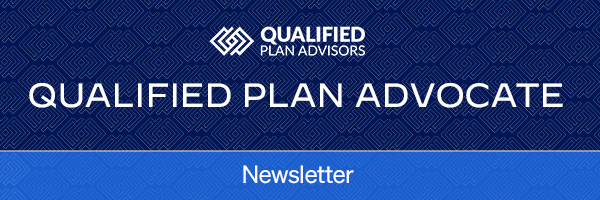SECURE 2.0 and Regulatory Updates From a Trip to Washington, D.C.
For more than 15 years, the American Bar Association Tax Section has provided me consistent opportunities to work directly with government officials on retirement plan-related matters. After COVID shifted some of those interactions to a virtual format, it has been great to move back to in-person meetings. Those meetings are particularly valuable when they take place in Washington, D.C., where there’s always just a bit more energy, higher attendance, and more interactions with the policymakers. Our meetings in May – including a half-day session at the U.S. Treasury Building and the subsequent Tax Section meetings with various practitioners and government officials – were no exception. For this month’s Newsletter, we wanted to provide you some of the insight from those meetings.
Appreciation for Civil Servants. Peoples’ perceptions of governmental jobs are not always positive. Their perceptions of Congress and policymaking may be even worse. But rest assured: there are many, many long-time, loyal civil servants fighting the good fight in Washington, D.C. Without regard to which political party occupies the White House and/or controls Congress, these civil servants seek to develop policies that balance competing interests and ultimately help Americans who need it the most. Specifically in the retirement arena, there are countless Treasury, IRS, and DOL officials who care far more about what is best for employees’ future retirement prospects than they care about who will win the next big election.
SECURE 2.0 Guidance: Self-Corrections. The SECURE 2.0 Act of 2022 expanded the ability to self-correct retirement plan failures. Although that expanded ability is quite welcome, the new law left many details open to question. The IRS made it clear that it was already hard at work on interpretive guidance that would fill in some gaps, including the ability to use retroactive amendments in connection with the Self-Correction Program (SCP). During this month’s Fiduciary 15, we’ll discuss some of those gaps and potential solutions. We’ll also discuss the interim solutions provided by Notice 2023-43, which the IRS issued a couple weeks after our recent meeting.
SECURE 2.0 Guidance: Emergency Savings Accounts (ESAs). One of the principal authors of SECURE 2.0’s ESA provisions led a discussion regarding the IRS guidance that would be most helpful. In the course of those conversations, it became clear that most have already experienced the recordkeepers’ reluctance to support ESAs. As a result, the IRS took a pragmatic approach to its key question: what guidance would make ESAs simple and remove barriers to recordkeepers and plan sponsors making them available to participants? The ultimate IRS position on ESAs will indeed be one favoring simplicity. The IRS wants participants to have access to ESAs. Later this year, we expect an IRS “grab bag” of guidance that will answer the most pressing practical questions.
SECURE 2.0 Guidance: Form 5500 Reporting Requirements. One could argue that the IRS and DOL’s recent Form 5500 reporting changes are not connected to SECURE 2.0. However, we now know that they are very much related. Let’s walk through two seemingly unrelated sets of rules.
The original SECURE Act added a requirement to permit “long-term part-time” employees to make deferrals into a plan. That ability would become available in 2025 for any employees who had been credited with at least 500 hours in three consecutive years. SECURE 2.0 shortened that period to two consecutive years. The rules are a bit more complicated than this, but in short, we will begin to see the number of “eligible participants” climb in 2025.
At the same time, the “small plan” threshold for annual Form 5500 and plan audit requirements has (again, in overly general terms) depended on whether a plan had at least 100 eligible participants. The IRS recently changed that requirement, though, so it will instead hinge upon the number of active participants with account balances. Why did the IRS make that change? It feared that the large jump in eligible participants in 2025 and beyond would unintentionally result in more small plans being subject to an annual full Form 5500 and audit requirement.
Additional SECURE 2.0 Items. Above, we referenced a forthcoming “grab bag” of guidance. Please join this month’s Fiduciary 15 webinar as we take a deeper dive on the items above and additional topics that interest the IRS. As you might imagine from the opening comments, you’ll also hear some encouraging remarks about the degree to which American workers will benefit from the dedication of many, many policymakers. We’re luckier than we might think.
– Matthew Eickman, J.D., AIF®

